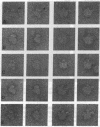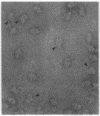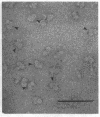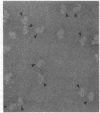Abstract
The halobacteria and the photosynthetic members of the eubacteria have previously been classified in two separate urkingdoms--the archaebacteria and the eubacteria, respectively. They were thought to be no more closely related to each other than they each were to the eukaryotes. In accord with this earlier classification, photosynthesis was thought to have originated twice by independent events--once within the eubacteria and once within the archaebacteria. In this paper, however, using three-dimensional ribosome structure as a probe of evolutionary divergences, we show that the eubacteria and the halobacteria are more closely related to each other than they are to any other known organisms. The simplest interpretation of our data is that all extant photosynthetic cells are descended from a single common ancestor that possessed a primeval photosynthetic mechanism. Numerous data on the occurrence of related biochemical processes in halobacteria and eubacteria support this theory. Essential components of the photosynthetic apparatus, such as carotenoids, are present in both halobacteria and in eubacteria, including the nonphotosynthetic eubacteria, suggesting that photosynthesis could be a primitive property of both groups. Our data indicate that together the eubacteria and the halobacteria form a monophyletic group for which we propose the name "photocytes." If other techniques of phylogenetic analysis confirm this evolutionary tree, we propose that the photocytes be given urkingdom status.
Full text
PDF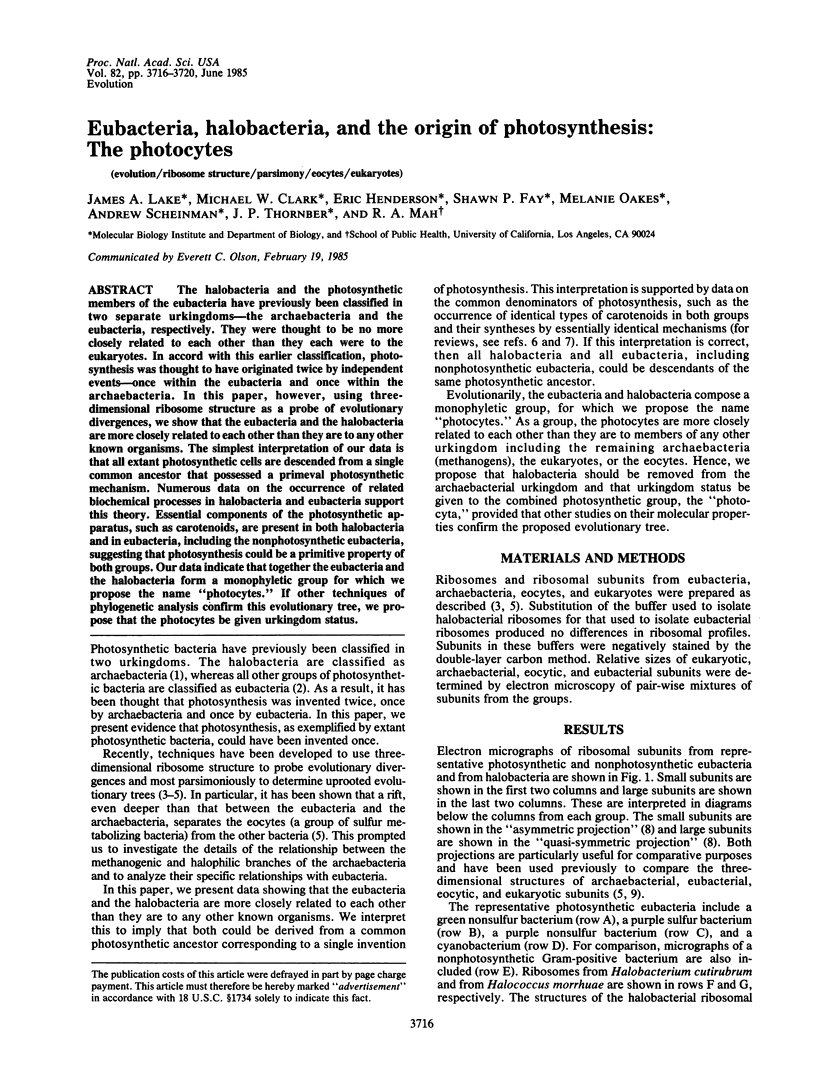
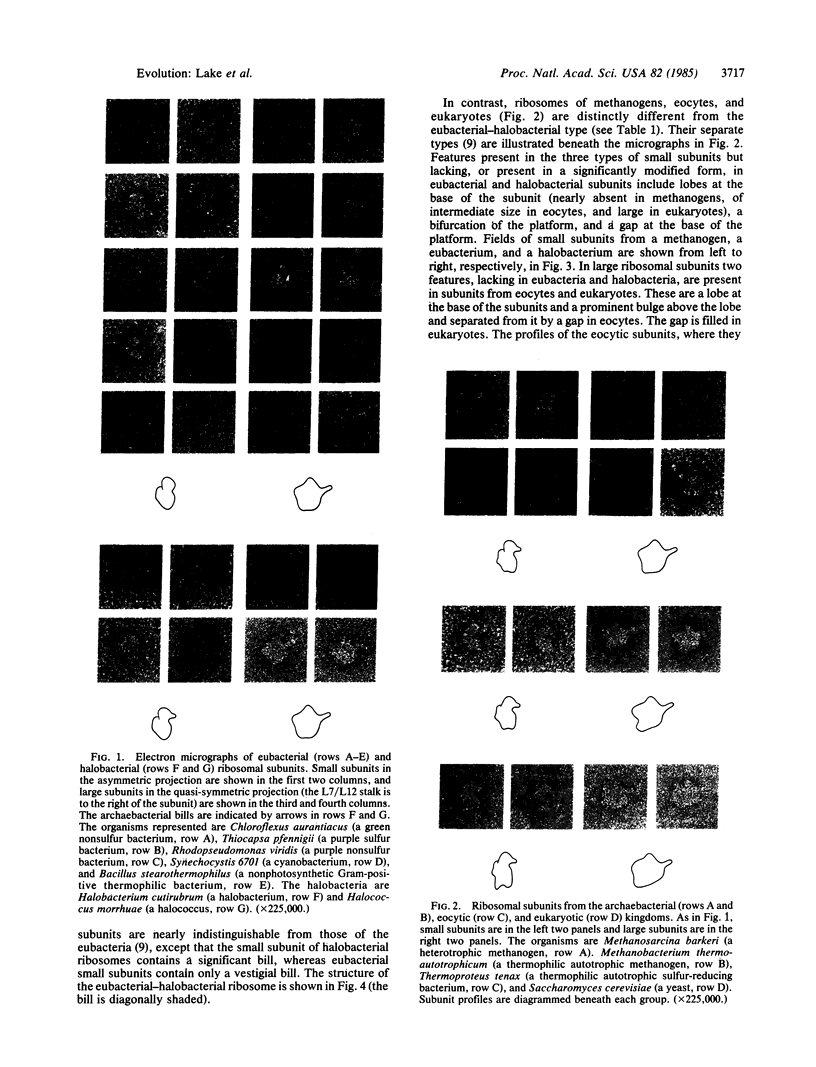
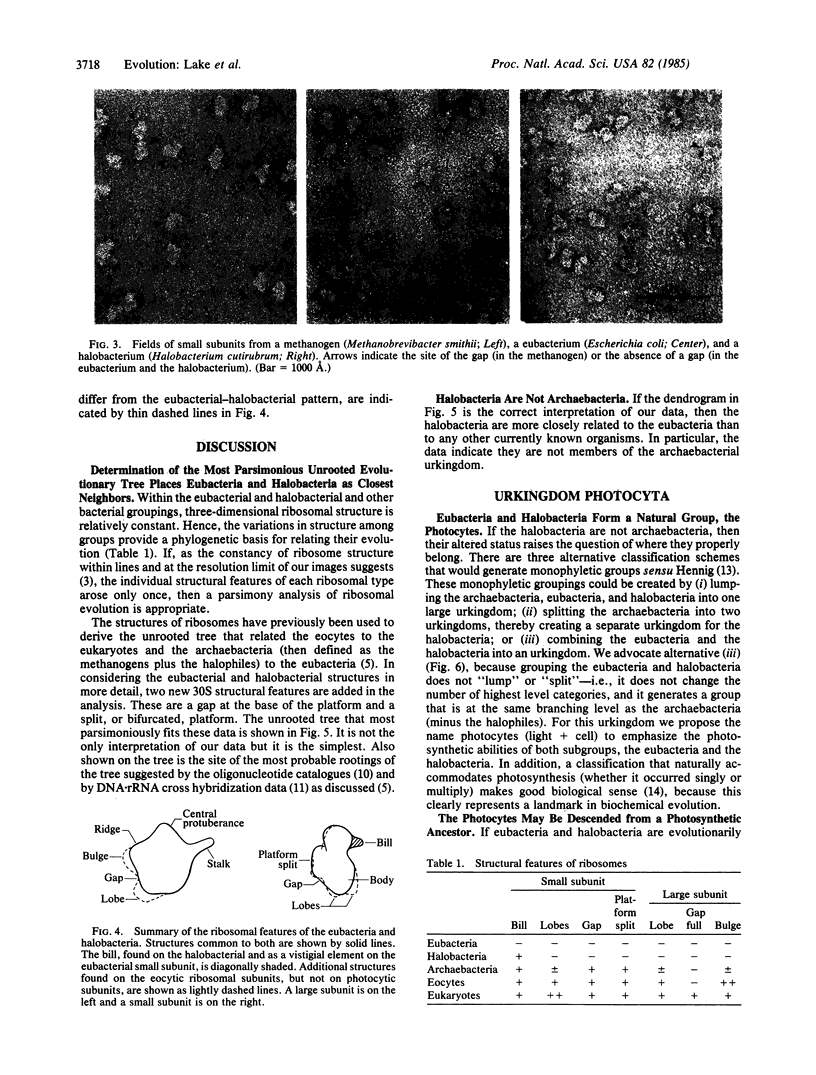
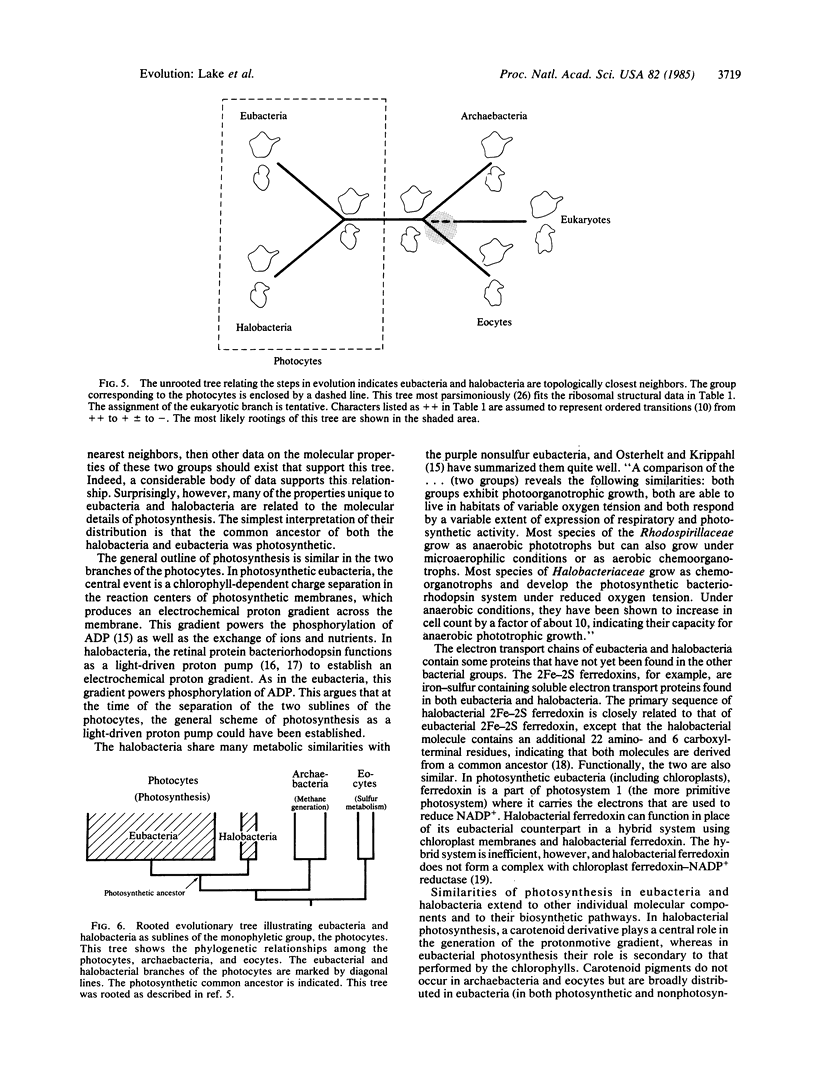
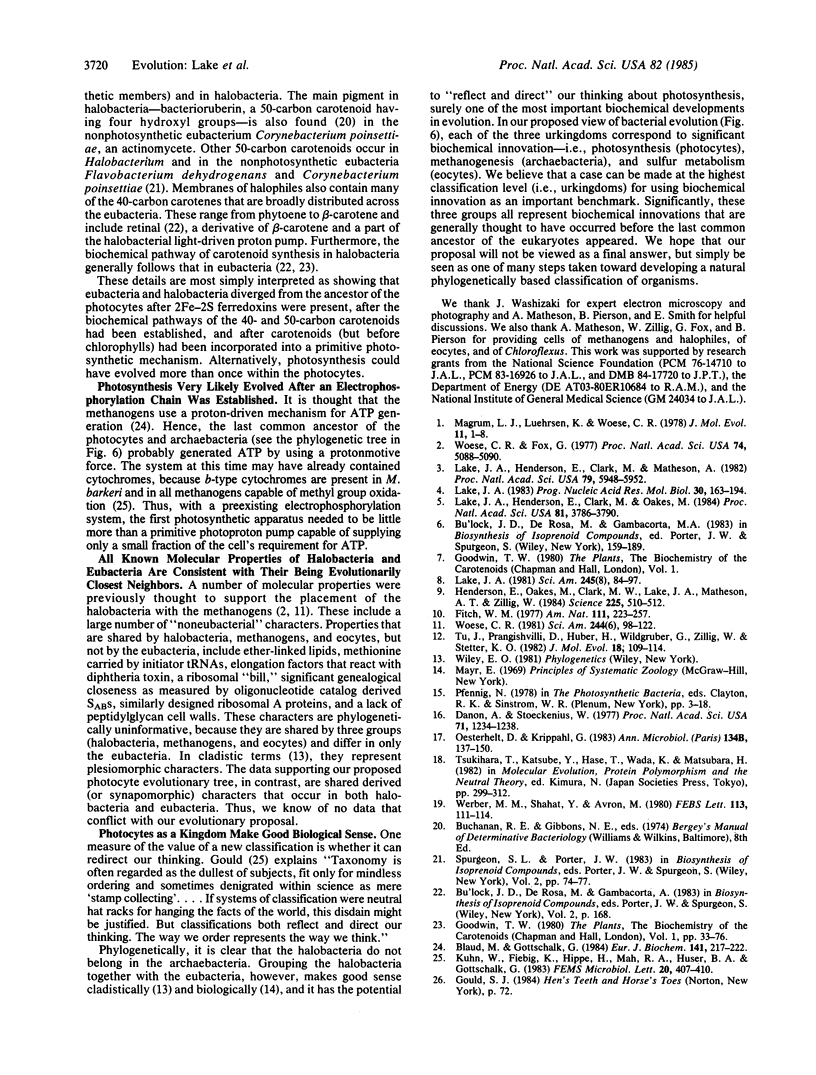
Images in this article
Selected References
These references are in PubMed. This may not be the complete list of references from this article.
- Blaut M., Gottschalk G. Coupling of ATP synthesis and methane formation from methanol and molecular hydrogen in Methanosarcina barkeri. Eur J Biochem. 1984 May 15;141(1):217–222. doi: 10.1111/j.1432-1033.1984.tb08178.x. [DOI] [PubMed] [Google Scholar]
- Danon A., Stoeckenius W. Photophosphorylation in Halobacterium halobium. Proc Natl Acad Sci U S A. 1974 Apr;71(4):1234–1238. doi: 10.1073/pnas.71.4.1234. [DOI] [PMC free article] [PubMed] [Google Scholar]
- Henderson E., Oakes M., Clark M. W., Lake J. A., Matheson A. T., Zillig W. A new ribosome structure. Science. 1984 Aug 3;225(4661):510–512. doi: 10.1126/science.6429855. [DOI] [PubMed] [Google Scholar]
- Lake J. A., Henderson E., Clark M. W., Matheson A. T. Mapping evolution with ribosome structure: intralineage constancy and interlineage variation. Proc Natl Acad Sci U S A. 1982 Oct;79(19):5948–5952. doi: 10.1073/pnas.79.19.5948. [DOI] [PMC free article] [PubMed] [Google Scholar]
- Lake J. A., Henderson E., Oakes M., Clark M. W. Eocytes: a new ribosome structure indicates a kingdom with a close relationship to eukaryotes. Proc Natl Acad Sci U S A. 1984 Jun;81(12):3786–3790. doi: 10.1073/pnas.81.12.3786. [DOI] [PMC free article] [PubMed] [Google Scholar]
- Lake J. A. Ribosome evolution: the structural bases of protein synthesis in archaebacteria, eubacteria, and eukaryotes. Prog Nucleic Acid Res Mol Biol. 1983;30:163–194. doi: 10.1016/s0079-6603(08)60686-8. [DOI] [PubMed] [Google Scholar]
- Lake J. A. The ribosome. Sci Am. 1981 Aug;245(2):84–97. doi: 10.1038/scientificamerican0881-84. [DOI] [PubMed] [Google Scholar]
- Magrum L. J., Luehrsen K. R., Woese C. R. Are extreme halophiles actually "bacteria"? J Mol Evol. 1978 May 12;11(1):1–8. doi: 10.1007/BF01768019. [DOI] [PubMed] [Google Scholar]
- Oesterhelt D., Krippahl G. Phototrophic growth of halobacteria and its use for isolation of photosynthetically-deficient mutants. Ann Microbiol (Paris) 1983 Jul-Aug;134B(1):137–150. doi: 10.1016/s0769-2609(83)80101-x. [DOI] [PubMed] [Google Scholar]
- Tu J. K., Prangishvilli D., Huber H., Wildgruber G., Zillig W., Stetter K. O. Taxonomic relations between archaebacteria including 6 novel genera examined by cross hybridization of DNAs and 16S rRNAs. J Mol Evol. 1982;18(2):109–114. doi: 10.1007/BF01810829. [DOI] [PubMed] [Google Scholar]
- Woese C. R., Fox G. E. Phylogenetic structure of the prokaryotic domain: the primary kingdoms. Proc Natl Acad Sci U S A. 1977 Nov;74(11):5088–5090. doi: 10.1073/pnas.74.11.5088. [DOI] [PMC free article] [PubMed] [Google Scholar]



